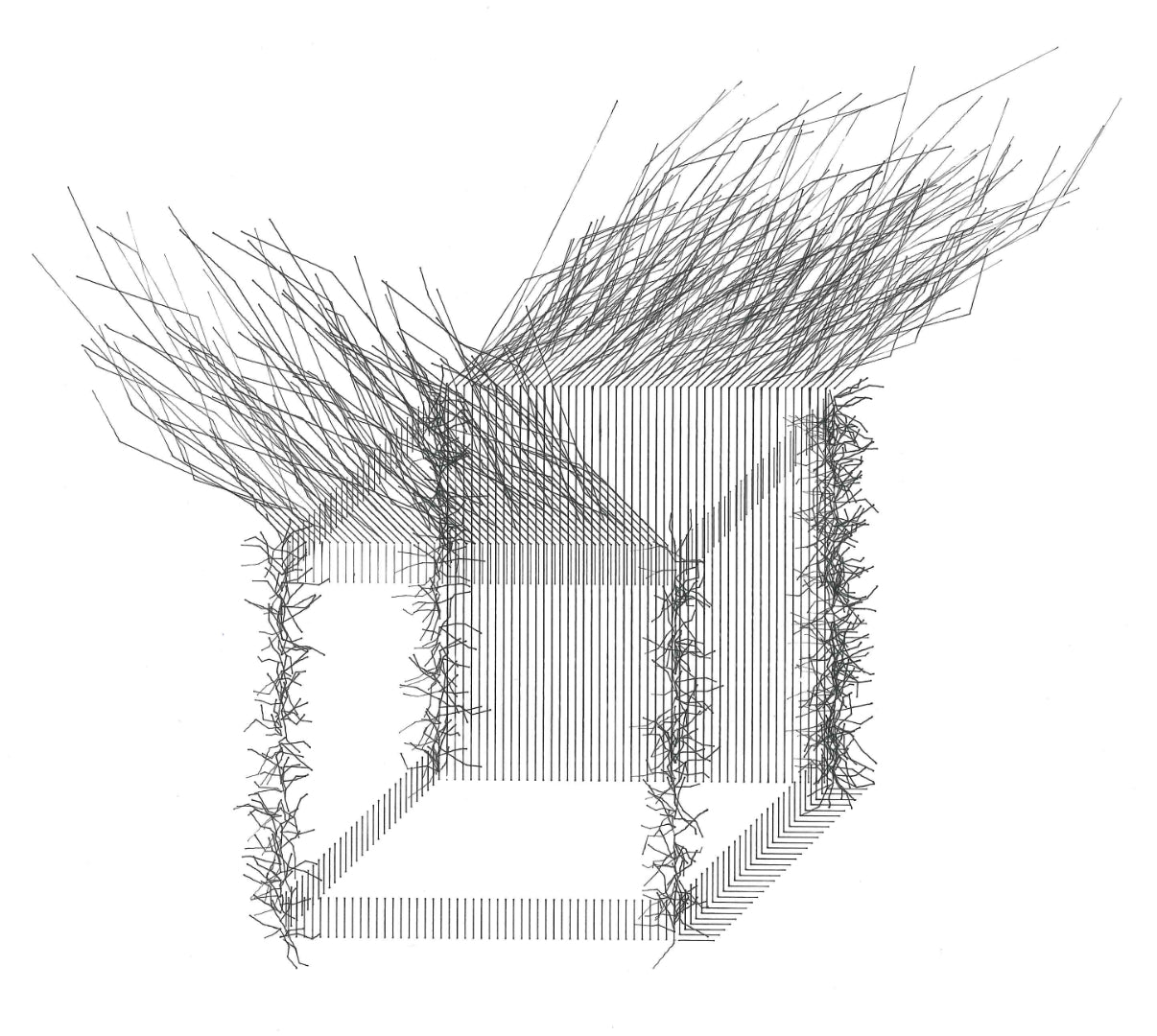In the 1980s, Hans Dehlinger created a series of cubes as pen plotter drawings. Almost 40 years later, the now-84-year-old artist returned to this topic, and 10 new cubes, titled LINE CUBES, are emerging from code as "aesthetic events".
A fascination with cubes is visible in Hans Dehlinger‘s work from the very beginning of his artistic expression. Among his early drawings is a series of digitally manipulated cubes, originally produced in 1986/87 on a small pen plotter. Larger drawings followed as he gained access to a larger plotter in subsequent years. One of the works from this series, a silkscreen print of CUBE 4, was Hans Dehlinger‘s first contribution to SIGGRAPH in 1989. Today, it is in the collection of the V&A Museum, London.
"The cube has always exuded a special fascination for me. As an architect, I see it as an extraordinary three-dimensional object and a kind of primordial space. It is one of the five Platonic solids and mathematically very simple, with twelve equal edges, six equal surfaces, and all its angles are rectangular. It is visually striking, whether shown with surfaces or just edges." – Hans Dehlinger
Hans Dehlinger learned how to code as a student in his twenties. Over the years, he had to learn new programming languages all the time, like anyone working with programming. Back then, he didn‘t have his own computer. Through the computer centre at the University of Kassel, Dehlinger had access to a Tektronix machine with a small A3 plotter. The first cubes series was made on that equipment, with Basic as a programming language.
Equipment was hard to come by and expensive. And there was very little recognition of computers as a valid tool for creating art. While the first attempts with cubes turned into a series, Dehlinger and two colleagues were trying to draw attention to computers in art and to alert other colleagues and students of their art school to the importance of this topic. This was in 1987. They organized a series of small exhibitions, talks, etc., and used the cubes for a poster for one of the events: a series of talks titled DESIGN KUNST COMPUTER (DESIGN ART COMPUTERS) that took place on June 26, 1987. There are 13 cubes on that poster.
Hans Dehlinger learned how to code as a student in his twenties. Over the years, he had to learn new programming languages all the time, like anyone working with programming. Back then, he didn‘t have his own computer. Through the computer centre at the University of Kassel, Dehlinger had access to a Tektronix machine with a small A3 plotter. The first cubes series was made on that equipment, with Basic as a programming language.
Equipment was hard to come by and expensive. And there was very little recognition of computers as a valid tool for creating art. While the first attempts with cubes turned into a series, Dehlinger and two colleagues were trying to draw attention to computers in art and to alert other colleagues and students of their art school to the importance of this topic. This was in 1987. They organized a series of small exhibitions, talks, etc., and used the cubes for a poster for one of the events: a series of talks titled DESIGN KUNST COMPUTER (DESIGN ART COMPUTERS) that took place on June 26, 1987. There are 13 cubes on that poster.
Through the new programming and technological possibilities that are available now, Dehlinger became aware of a whole new dimension of working with cubes. That includes 3D programming as well as releasing work that lives exclusively in the digital realm. Now, because generating output isn’t the hardest part anymore, selection becomes the main challenge. In other words, arriving at works that satisfy the artist’s own aesthetic ambitions isn‘t primarily a coding problem anymore, but a problem of judgment and selection.
At its core, selecting touches on the question, "What is art?" In Germany, there is a quote attributed to an incident where a work of Joseph Beuys was unintentionally destroyed: "Ist das Kunst oder kann das weg?" ("Is this art or can this be done away with?") Hans Dehlinger says: "That is basically the question I ask myself. Once I’m at a point where I can’t further narrow down a selection myself, I may enlist help, including from my future self. For example, I ask myself whether I’ll still be happy with this output 20 years from now. By the way, with the CUBES series from 1986/87, this has proven to be true; I am still very happy with it to this day."
"There are many artists who have been recognized only posthumously or never. I could very easily have been one of them, but I am alive and still able to work on the things that intrigue me—and connect with many interesting people over them." – Hans Dehlinger
ABOUT THE NFT
The NFT is available on Foundation and priced in ETH. The price might vary slightly from the price mentioned on this page.










